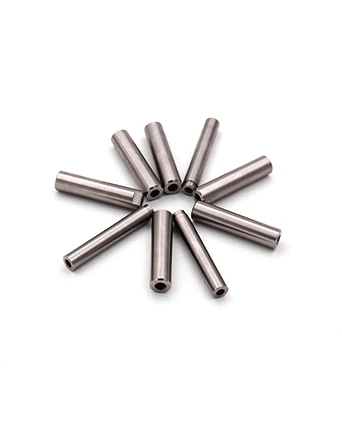Time to read: 6 min

Stainless steel, renowned for its durability and resistance to corrosion, comes in various grades, each with unique properties. This guide provides a detailed comparison between 304 and 316 stainless steel, highlighting their properties, benefits, and ideal applications to assist you in making an informed choice for your project.
Introduction to Stainless Steel Grades
Stainless steel's versatility stems from its composition, which varies to create different grades like 304 and 316. Each grade is tailored for specific applications, making it crucial to understand their characteristics.
304 Grade Stainless Steel
304 stainless steel is the most widely used variant, containing 8 to 10.5% nickel and 18-20% chromium. It is valued for its heat resistance, corrosion resistance, and suitability for industrial and commercial applications.
Key Properties:
- Excellent corrosion resistance
- High machinability and weldability
- Aesthetic appeal in construction and architecture
316 Grade Stainless Steel
316 stainless steel, with a max carbon content of 0.08%, 10% nickel, 16% chromium, and 2-3% molybdenum, is known for its enhanced corrosion resistance in marine and chloride-rich environments.
Key Properties:
- Superior corrosion resistance due to molybdenum content
- High heat resistance and tensile strength
- Common in medical applications due to its hygienic surface
Differences Between 304 and 316 Stainless Steel
Understanding the distinctions between these two grades is essential for selecting the appropriate material for your project.
- Chemical Composition: 316 contains more nickel and molybdenum, contributing to its corrosion resistance.
- Mechanical Properties: 316 has higher yield strength and hardness, making it suitable for high-stress applications.
- Corrosion Resistance: 316 outperforms 304, particularly in acidic, alkaline, and chloride environments.
- Temperature Resistance: 304 has a higher melting point, offering better heat resistance.
- Durability: Both grades are durable, but 316's enhanced properties provide a slight edge.
- Weldability and Formability: Both grades are weldable, with minor differences due to chemical composition.
- Price: 304 is more cost-effective, while 316's additional elements make it more expensive.
Common Applications of Stainless Steel 304 & 316
- Aerospace Industry: Utilized for lightweight, strong, and durable parts.
- Medical Equipment: Chosen for its corrosion resistance and ease of cleaning.
- Household Equipment: Popular for utensils and cutlery due to durability and heat resistance.
- Food and Drinks: Used for containers and equipment due to non-reactivity with food acids and alkalis.
Choosing Between SS304 and SS316
The selection between SS304 and SS316 depends on factors such as the project's environment, operating temperature, and budget constraints.
Conclusion
The comparison between SS304 and SS316 stainless steel is not one-size-fits-all. It requires a thorough understanding of their properties and applications. Unofactory, with its expertise in rapid prototyping services, can assist you in choosing the right material and manufacturing high-quality products for various industries.




